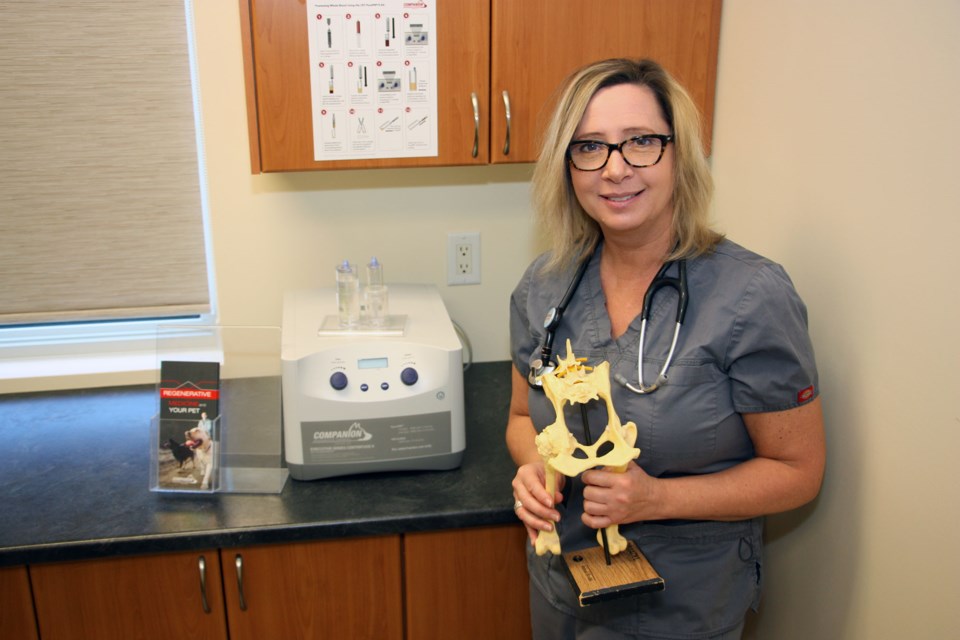The latest science in small animal treatment is alive, but not in a Dr. Frankenstein way.
Dr. Jacquie Pankatz, the owner and a veterinarian at Mountain Vista Veterinary Hospital in Collingwood, is exploring regenerative medicine that uses an animal's own (live) cells to promote healing and offer relief from arthritic pain.
Pankatz is now offering platelet rich plasma (PRP) therapy for pets at her hospital.
“It’s not new in human or equine application,” said Pankatz. “But it’s just now becoming used in small animals.”
It works like this: vets like Pankatz take a blood sample from the dog or cat that will be getting the treatment. The blood, which contains platelets, is then conditioned via a specifically calibrated centrifuge to isolate the platelet-rich plasma resulting in a pinkish solution that’s injected back into the animal at the source of pain or inflammation or injury.
“Platelets are really neat, they’re super cells that carry messages to tell the body to eat up damaged cells and regenerate,” said Pankatz.
She’s expecting to use the PRP therapy in mostly senior dogs suffering from osteoarthritis pain.
“Traditionally, we would give anti-inflammatory drugs,” said Pankatz, adding the problem with long-term use of medicine is side effects such as severe stomach ulcers and the toll on an animal’s organs.
With the option of PRP, she’s hoping to reduce or eliminate the prescriptions a dog suffering from arthritis will require on a daily basis.
“The worst thing that could happen with PRP is it doesn’t work,” said Pankatz. “It’s putting your own natural cells back into your body … It’s so safe … I think that’s what we like about it.”
She’s applied the therapy to one dog who had cruciate ligament surgery but was experiencing a slow recovery and limping three months after the surgery.
She said a couple weeks after a PRP treatment the dog was fully weight-bearing on the repaired ligament and had “really positive” results.”
The treatment typically comes in slightly under the cost of six months of daily anti-inflammatory medication, and needs to be repeated about every eight months in the case of a chronic condition like arthritis.
“I think the greatest benefit is going to be those old, arthritic dogs,” said Pankatz. “Quality of life is so important, especially in senior pets.”
According to the Companion Health website, which is the company supplying Pankatz with her centrifuge for PRP, the therapy can also be used to treat burn wounds, open wounds, speed up healing in bone grafts and improve certain spinal conditions.
Platelets contain growth factors, which range from vessel development and repair to cellular recruitment and activation.
“I wouldn’t be surprised if people and even vets are skeptical… it takes a while for people to come over, but I think we’re at the tip of the iceberg for what this can do,” said Pankatz. “I think these [regenerative medicine] treatments are probably going to become more traditional down the road.”
To learn more about PRP and their application to dogs and small animals, visit the Companion Health website here.

